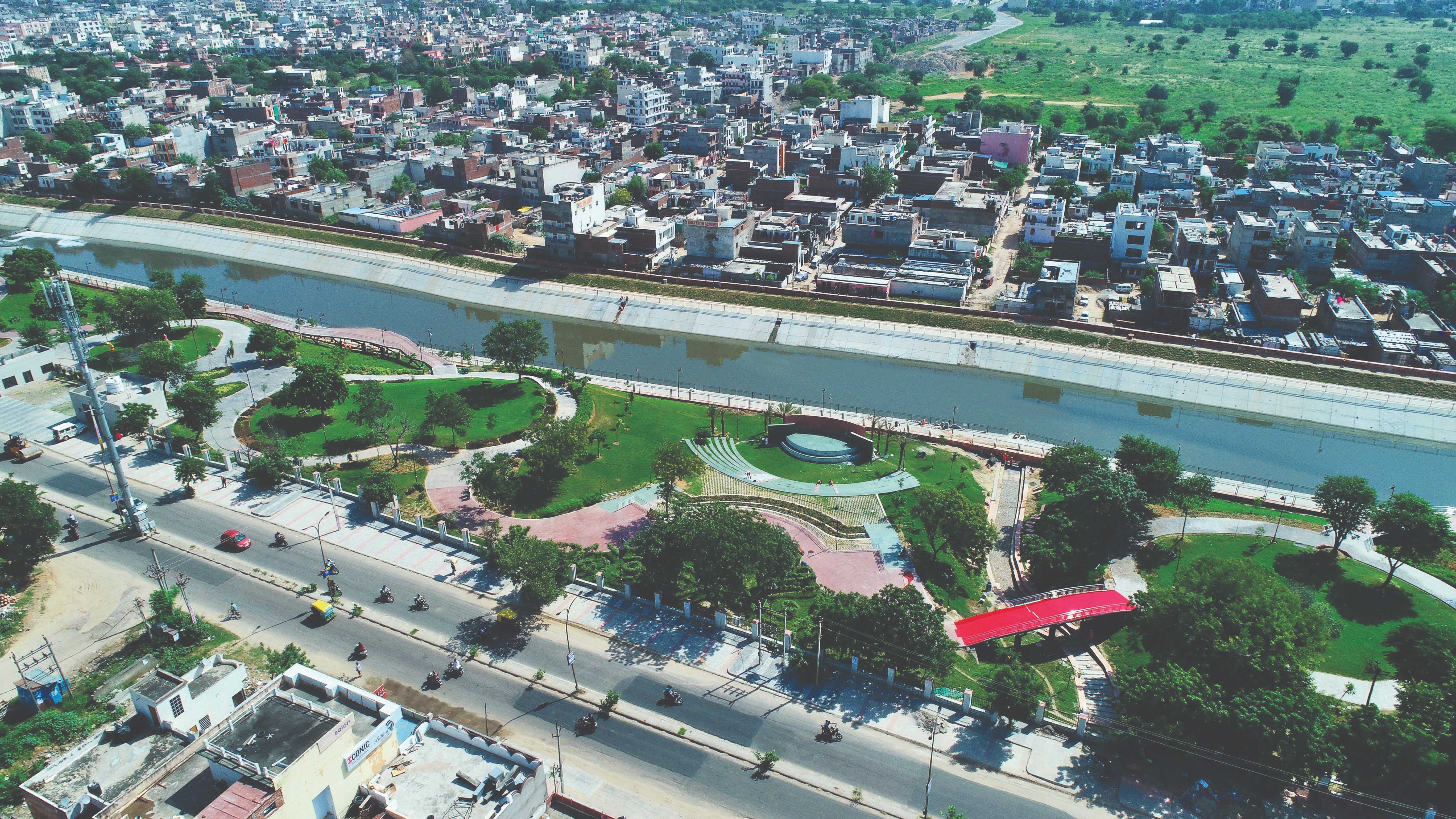Rushing, roaring and gushing forth with a low hissing sound and taking along dry leaves that float on its waters. A spectacle that is calming and soothing to the eyes, while bubbly children play in beautiful parks located on its pristine embankments. This is Dravyavati river today – a thriving hub that lures the citizens of Jaipur to come and spend some rejuvenating moments on its sprawling embankments.
Merely a few years ago, however, the Dravyavati River or Amanishah Nallah had become a victim of fate and stared at an unfortunate situation synonymous with many other rivers flowing through various Indian cities. Its waters had got polluted and contaminated with sewage and industrial waste while emitting a foul smell thereby posing a health risk to the residents of Jaipur, especially children who were more vulnerable.
Another point of concern was the river being utilized for cultivation and these impurities entering the food chain thereby threatening the health of citizens. Also known as ‘Pink City’, Jaipur is one of India’s foremost tourist locations and therefore a polluted ‘nallah’ in its midst was an eyesore to the local economy.
In addition, the polluted river was damaging marine life and vegetation thereby threatening the area’s fragile eco-system. This was disheartening since the Dravyavati River is an important natural asset of Jaipur that finds mention in history since the 15th century. Originating in the western slopes of Nahargarh - Amer Hills and flowing through the west side of Jaipur city, this river has always had an emotive connect with residents – the vast majority of whom live within its ten kilometre periphery.
Major flooding in 1981 and recently in 2012 further aggravated the situation and reduced this once magnificent river into a 47.5 km long cesspool. To correct this anomaly and ensure course correction, the Rajasthan government approached many organisations to conduct studies and suggest remedial measures. A consortium comprising of Tata Projects and Shanghai Urban Construction Group (SUCG) was thereafter selected by Jaipur Development Authority to execute the ` 1,676 crore Dravyavati River Project.
The execution team faced a daunting task with 82 major and minor drains wherein industrial waste and other sewage got collected and mixed to form a toxic concoction. Encroachments furthermore complicated the delicate scenario and reduced the river’s cross-section thereby preventing the free flow of water or toxic liquid concoction that existed then.
Battling hurdles such as right of way, high temperatures and a tough deadline, the execution teams moved ahead with chalking out their strategy and engaging various stakeholders. The foremost stakeholders were the residents themselves but certain sections remained hesitant to support the Dravyavati River rejuvenation project. To enhance confidence amongst the local populace and show good faith, the execution team strengthened outreach initiatives by supporting schools along the 47.5 km river length.
Additionally, several health check-up camps were conducted and local residents employed at worksites. This ensured that labour shortage was mitigated while nearby communities prospered through the income received. The employment initiatives were especially welcomed by local women who joined in large numbers thereby ensuring support from entire families.
Aided by five sewage treatment plants, the Dravyavati River Project will oversee the amortisation of 170 MLD polluted water and have more than 100 fall structures constructed to turn this rain side river to a perennial river. Physical, chemical and biological processes are used to remove contaminants and produce treated wastewater that is safe for agricultural purposes and aquatic life.
Alongside Dravyavati River, three different parks - Bird Park, Landscape Park and Botanical Garden are sprawled across lush area of 1,00,000 sq m. In addition, there will be more than 18,000 trees planted and 65,000 square meters green area developed under this project. It is expected that the Dravyavati River bank will soon lure people seeking solitude and calmness or allow them to create cherished memories with loved ones.
The Dravyavati River will once again majestically flow through the heart of Jaipur with renewed vigour and life. While people, birds and marine life will once again flock to its embankments thereby providing an impetus to the city’s tourism potential. After completion of their tasks, the engineers and workers of Tata Projects will take a backseat while brimming with pride at having successfully achieved a herculean feat – one that shall be remembered by the future generation of Jaipur residents.
@EPC World Media






